
|
While MTH had not yet officially created the "Imperial" line of RailKing engines when this came out, they did
hold a few models to
higher standards than others with features such as enhanced lighting, firebox glow, engine cab figures,
back-up tender light, die-cast tender and much better digital sound. There's nothing personal
about this particular engine
other than when I saw it, I loved it. I'm guessing it was simply because it was a big engine, I liked the
grey paint and that monster tender didn't hurt either. I was wanting a larger steam train for a while and
with all the (unofficial) Imperial upgrades, I decided to go for it. One thing to note, this was the
first solo engine I bought. All the others prior to this one were parts of sets.
(Click on any picture to enlarge) 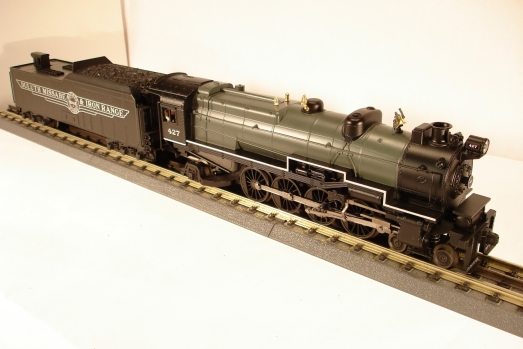 Here's an even bigger photo 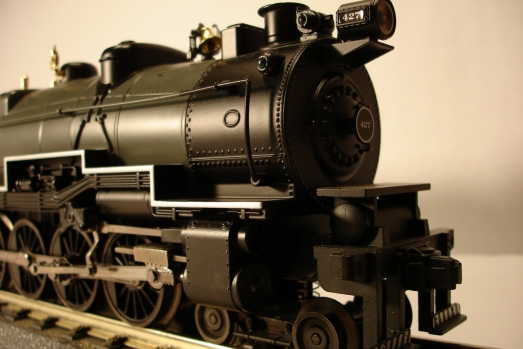 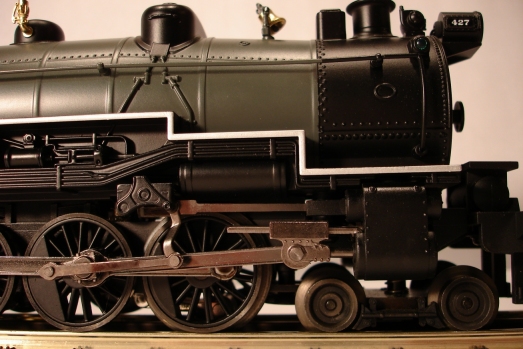 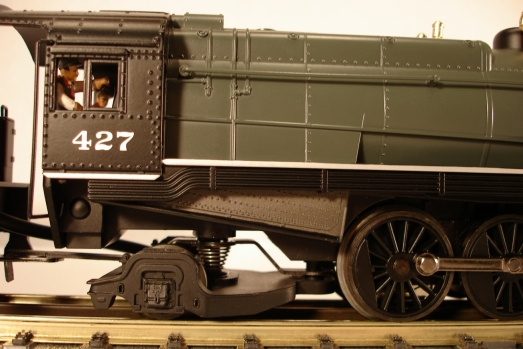 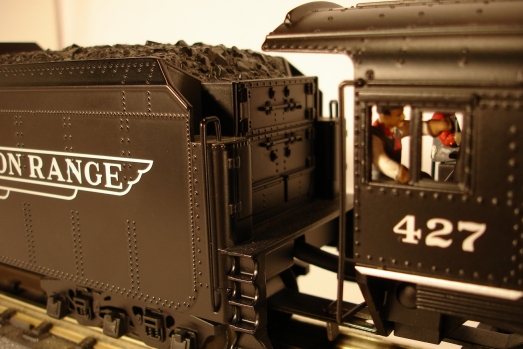 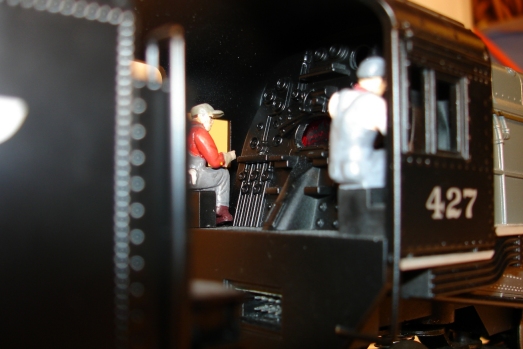 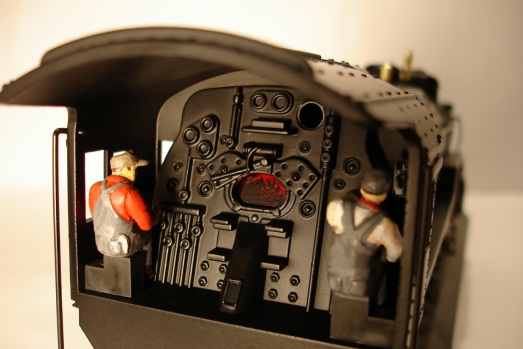 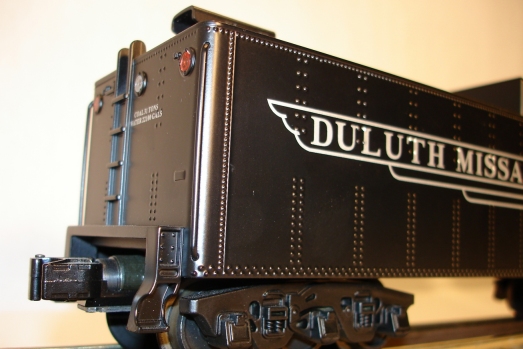 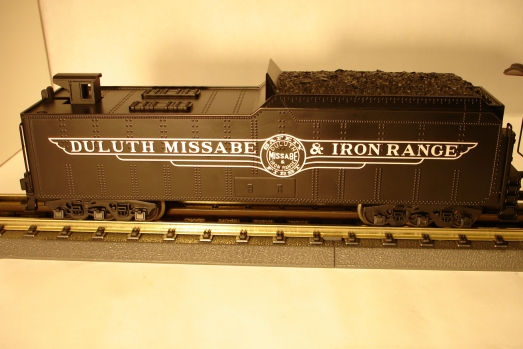 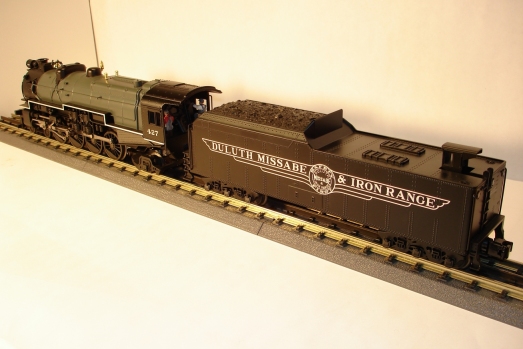 Here's some history... The Mountain represents the apex of Pennsy steam power in the golden age of railroading. It was the last in a line of highly successful, home-designed, Belpaire-boilered Pennsy steamers that included the E6 Atlantic, the H series Consolidations, the K4 Pacific, and the I1 Decapod. (A Belpaire boiler is identified by the squared-off hump at the rear, above the firebox.) While the Pennsy's late experiments with modern streamlined steamers were visually exciting, they failed at their intended purpose - stopping the diesel onslaught. The M1's in fact outlasted all the experimental engines, soldiering on for three decades to the very end of steam. 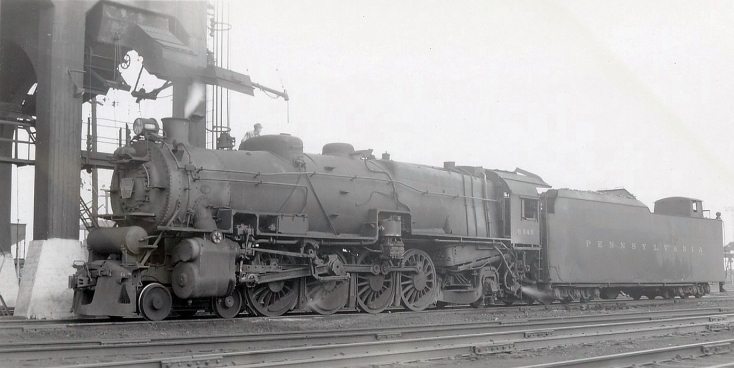 I think this is my favorite vintage train picture ever (be sure to click on it). Perhaps it's because the size and clarity of the photograph are rare for the time. I think it's that, complimented by the fact that this is actually a moment in time when steam was truly alive, and this engine was in the yard getting ready to go back to actual work (you can see her blowing off steam and a mechanic working on her). It's slightly melancholy as well, because we all know that a scene like this will never be captured on film again. The first M1 was built in 1923 in the PRR's Juniata shops and, in typical conservative Pennsy fashion, underwent years of testing and refinement before the railroad committed to the design. But once the die was cast, the Pennsy - the self-proclaimed Standard Railroad of the World - did things in a big way, as usual. Two hundred M1's were built in 1926 and a hundred M1a's, with slight upgrades from the original engines, were turned out in 1930 by Baldwin, Lima, and the Pennsy's own shops. 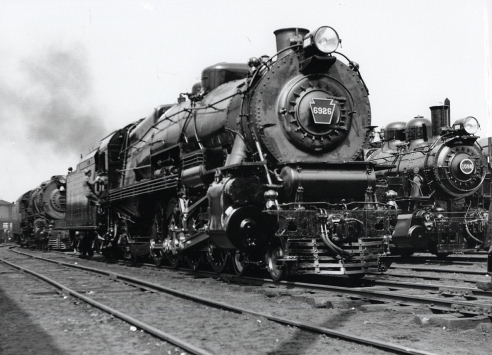 While the first Mountains were delivered pulling normal-sized tenders, with the 1930 delivery the huge "coast-to-coast" tenders became the norm. Although their large coal and water capacity lessened the need for fuel stops, they were also equipped with scoops for taking on water on the fly, from pans between the rails. With their big 72-inch drivers, the Mountains were designed to be dual-service passenger and fast freight engines. Despite their name, they ruled the relatively level divisions of the Pennsy - except the electrified lines - where they could hustle 17- or 18-car passenger trains or hundred-car freights. Within a few years of their introduction, the Mountains found their niche as the Pennsy's preferred freight engine in most non-electrified territory. 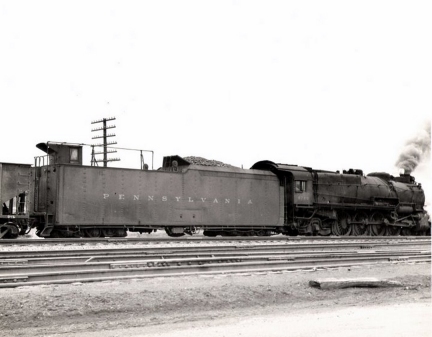 In 1946, several M-1a locomotives were upgraded and re-classified M-1b. Some important changes made to the locomotive included a twenty pound increase in steam pressure to 270 pounds and installation of circulators in fireboxes, which increased heating surface by thirty-five square feet. These changes occurred after the locomotives were sixteen or more years old; consequently, their final years were spent hauling the heaviest loads of their lifetimes. 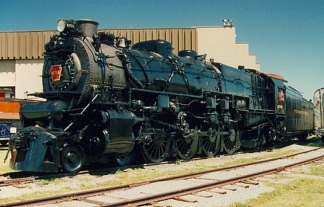 Mountain number 6755 (above), built in the Pennsy's Altoona shops in 1930, was preserved by the railroad and resides today at the Railroad Museum of Pennsylvania in Strasburg, PA. |
Back to Fairchild Junction